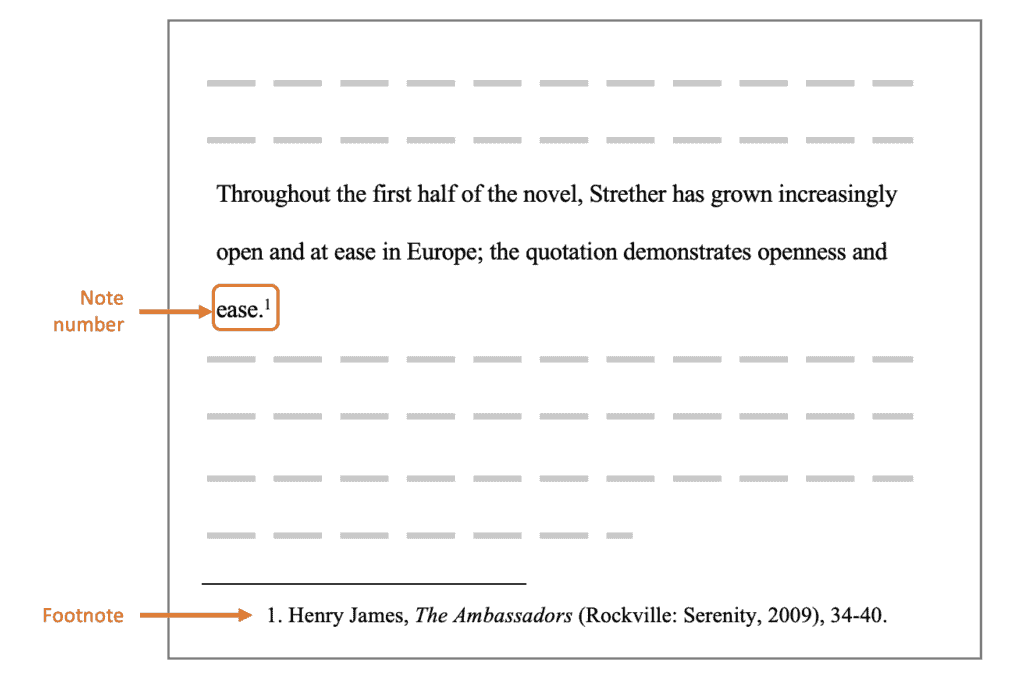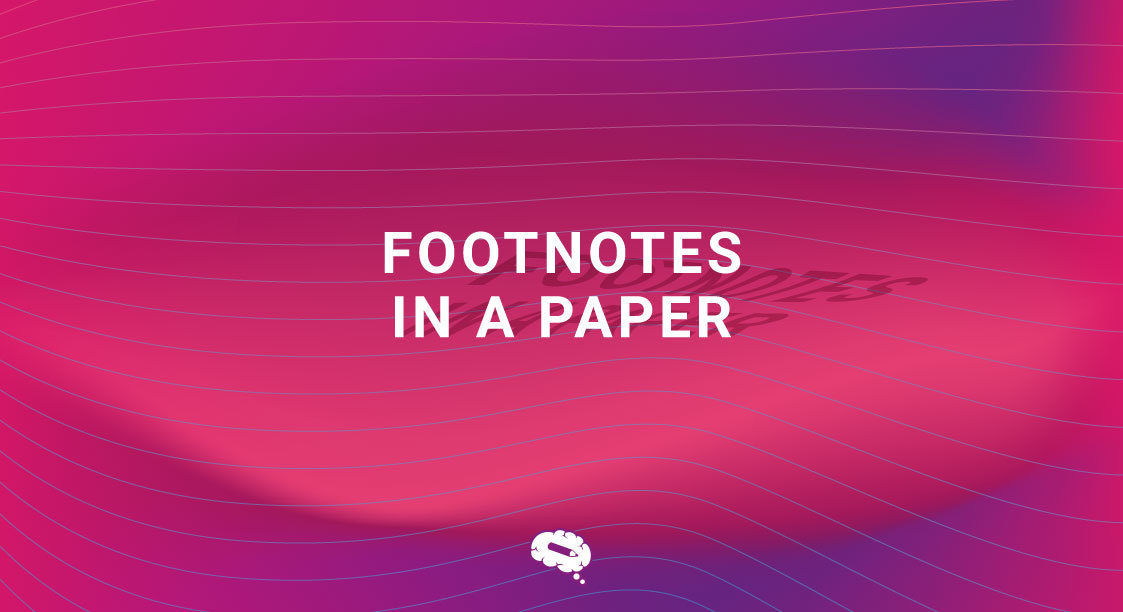Footnotes in a paper can be a valuable tool in providing a way to supplement our writing with additional information, citations, and explanations without disrupting the flow of the main text. However, many writers may be unsure of when and how to use footnotes effectively. In this article, we will explore the importance and usage of footnotes in academic writing, and provide practical tips for incorporating footnotes into your own writing. Whether you are a seasoned academic writer or just starting out, understanding how to use footnotes can help you increase the clarity and credibility of your writing.
Hva er fotnoter?
Fotnoter er et nyttig verktøy i akademisk skriving som gjør det mulig å inkludere tilleggsinformasjon eller kommentarer i et dokument eller en tekst. Fotnoter vises vanligvis med et lite tall eller symbol i hovedteksten, nederst på siden, og kan brukes til en rekke ulike formål. Fotnoter kan for eksempel brukes til å klargjøre et poeng, gi bakgrunnsinformasjon eller kreditere en kilde som ikke er direkte sitert eller referert til i hovedteksten. De er også nyttige for å unngå at flyten i hovedteksten blir forstyrret, særlig når det er nødvendig med lange sitater eller forklaringer. Kort sagt, fotnoter gir leserne tilleggsinformasjon eller referanser knyttet til spesifikke deler av teksten, noe som gjør dem til et verdifullt verktøy for forskere.

Hvordan skrive en fotnote
Følg disse generelle trinnene for å skrive en fotnote til en artikkel:
- Determine what information needs to be included in the footnote. This may include the author’s name, the title of the source, the publication date, the publisher, and the page number(s) you are referencing.
- Plasser fotnotenummeret eller -symbolet på slutten av setningen eller avsnittet som krever fotnote. Fotnotenummeret eller -symbolet skal plasseres etter tegnsetting, for eksempel punktum eller komma.
- Skriv selve fotnoten nederst på siden. Den første linjen i fotnoten skal være innrykket, og de påfølgende linjene skal flukte med venstre marg.
- Formater fotnoten i henhold til referansestilen du bruker (f.eks. MLA), APA, Chicago). Hver siteringsform har spesifikke regler for hvordan fotnoter skal formateres, så se den aktuelle stilguiden for mer informasjon.
- If you are using a word processing program, such as Microsoft Word, you can use the “Insert Footnote” function to automatically insert footnotes and format them correctly.
Forskjellen mellom fotnoter og sluttnoter
The main difference between footnotes and endnotes is their placement within a document. Footnotes appear at the bottom of the page on which they are referenced, while endnotes appear at the end of a document, chapter, or section.
Her er noen andre forskjeller mellom fotnoter og sluttnoter:
| Fotnoter | Sluttnoter | |
|---|---|---|
| Definisjon | Notater plasseres nederst på samme side som referansen. | Notater plassert på slutten av dokumentet. |
| Plassering | Under teksten de refererer til, vanligvis med mindre skriftstørrelse. | På slutten av dokumentet, vanligvis i samme skriftstørrelse som hovedteksten. |
| Bruk | Brukes for å gi ytterligere informasjon eller forklaring på et punkt i teksten. | Brukes til å gi tilleggsinformasjon, forklaringer eller kildehenvisninger. |
| Fordeler | Easy to locate and read in the context of the text. | Hold teksten ren og ryddig. |
| Ulemper | Kan gjøre siden uoversiktlig og distrahere leseren. | Kan kreve at leseren blar frem og tilbake mellom teksten og sluttnotene. |
Chicago Stil Fotnoter
Chicago-style footnotes are a common citation style used in research papers. In this format, footnotes are used to provide information about a source within the text. There are two types of Chicago-style footnotes: short form and long form. Short form citations include only the basic details of a source if a full bibliography is provided, while long form citations include a full citation the first time a source is cited, with subsequent citations using the short form.
Her er et eksempel på en fotnote i Chicago-stil som bruker kortformen:
“The concept of social capital has been widely discussed in recent years, with Putnam’s Bowling Alone¹ being one of the most influential works in the field.”
Nederst på siden vil den tilsvarende fotnoten vises som:
¹ Putnam, Bowling Alone, 26.
Note that the author’s last name is listed first, followed by the abbreviated title of the work (in this case, “Bowling Alone”), and the page number where the information was found.
Her er en fotnote i Chicago-stil ved hjelp av eksemplet med kortformen:
Første referanse:
John Smith, The History of Chicago (Chicago: University of Chicago Press, 2005), 25.
Senere referanse:
Smith, Chicagos historie, 30.
Her er et eksempel på en Chicago-fotnote i tekst:
“According to Smith, the notion of human rights can be traced back to ancient Greek philosophy.¹”²
Nederst på siden:
¹John Smith, The Origins of Human Rights (New York: Oxford University Press, 2021), 15.
²Smith, Origins of Human Rights, 22.
Learn how to make citations in Chicago style in our blog “Chicago Style Citation Made Easy: Formatering og eksempler“.
APA Stil Fotnoter
APA format generally uses parenthetical in-text citations instead of footnotes. However, there are two exceptions to this rule: content footnotes and copyright attribution. Content footnotes provide additional information on a single topic that does not fit coherently in the text, while copyright attribution footnotes are used when a writer uses a lengthy quotation or other copyrighted material, such as a stock photograph. Footnotes are formatted similarly to Chicago style, with sequential superscript numbers coming after the passage and the corresponding footnote at the bottom of the page.
Here’s an example of an APA-style footnote for supplementary information:
I tekst:
According to recent studies, the COVID-19 vaccine is highly effective in preventing infection and transmission of the virus.¹
Fotnote:
¹For more information on the studies cited, see Smith et al. (2021) and Jones et al. (2022).
Learn how to make citations in APA style in our blog “Hvordan lage kildehenvisninger med APA-formatering: En veiledning“.
MLA Stil Fotnoter
MLA (Modern Language Association) bruker vanligvis ikke fotnoter. I stedet brukes teksthenvisninger for å angi kilden til informasjon eller sitater. Hvis det er nødvendig med fotnoter i en bestemt publikasjon eller oppgave, kan følgende retningslinjer følges:
Plassering: Fotnoter skal plasseres nederst på siden der referansen står.
Nummerering: Fotnoter skal nummereres fortløpende gjennom hele oppgaven ved hjelp av arabiske tall. Nummeret skal plasseres etter eventuelle skilletegn, for eksempel punktum eller komma.
Formatering: Fotnoter skal skrives med én linjeavstand og i en mindre skriftstørrelse enn hovedteksten.
Innhold: Fotnoter skal inneholde bibliografisk informasjon om kilden som siteres, samt eventuell tilleggsinformasjon som er nødvendig for å tydeliggjøre referansen. En fotnote til en bok kan for eksempel inneholde forfatter, tittel, utgiver og utgivelsesår, mens en fotnote til et nettsted kan inneholde URL-adresse og dato for tilgang.
Eksempel på en fotnote i MLA-stil for en bok:
John Doe, The History of Art (New York: Penguin Books, 2000), 24.
Eksempel på en fotnote i MLA-stil for et nettsted:
“The Benefits of Exercise,” National Institutes of Health, accessed May 15, 2023, https://www.nih.gov/health-information/benefits-exercise.
Et eksempel på en fotnotetekst i MLA Style:
Text: According to a recent study, the use of social media can have negative effects on mental health (Johnson 36).²
Footnote citation: ² Johnson, Sarah. “The Impact of Social Media on Mental Health.” Journal of Health Psychology, vol. 22, no. 1, 2018, pp. 35-44.
Learn how to make citations in MLA style in our blog “En forfatters guide til MLA-formatet: Slik gjør du det riktig“.
Improve your papers’ impact and visibility through quality visual communication
Mind the Graph is an innovative platform that provides a wide range of tools to help scientists improve their papers’ impact and visibility through quality visual communication. With Mind the Graph, scientists can easily create graphical abstracts, posters, and other visual aids that can effectively communicate their research findings to a wider audience.

Abonner på nyhetsbrevet vårt
Eksklusivt innhold av høy kvalitet om effektiv visuell
kommunikasjon innen vitenskap.






